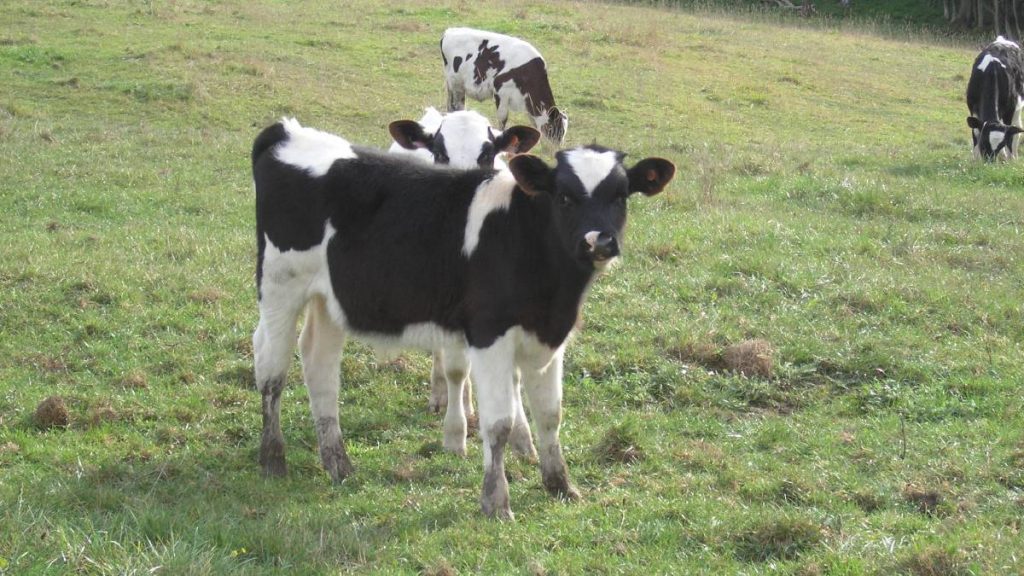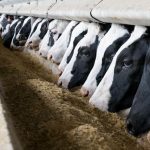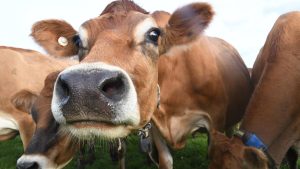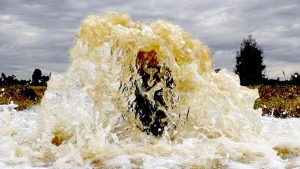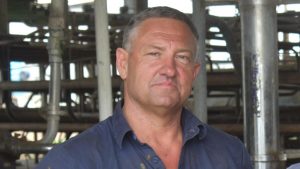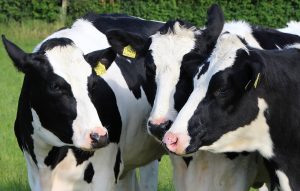
The Australian dairy industry needs to address the issue of surplus calf management or run the risk of having regulations imposed by people who do not understand farming.
That was the message from world-leading animal welfare expert Professor Nina von Keyserlingk to the Australian Dairy Farmers online Dairy Beef Forum earlier this year.
Prof von Keyselingk said recent research undertaken with consumers in the United States showed early slaughter of calves was unacceptable.
The majority of people were comfortable with animals being raised for food, but saw early slaughter of animals (at less than two weeks of age) as a waste or meaning that the animal’s life lacked purpose. She presented some quotes from participants in the research:
- “The idea of slaughtering such a young animal is unsettling, it just sounds horrible.”
- “I’ve never given any thought before; now that I know, I feel terrible.”
- “I think it’s slightly horrific to kill something after two weeks of living.”
- “After reading this I’m not as confident in the industry as I was.”
Prof von Keyselingk said in Europe some milk processors and supermarkets were now refusing to accept milk from farms where early slaughter of calves occurred while Britain had introduced a policy that committed the dairy industry to no longer euthanise bull calves.
The surplus calf issue was critical to the dairy industry’s sustainability.
“I feel very strongly about trying to find a sustainable path forward for all forms of animal agriculture,” she said.
“For something to be sustainable, it must be environmentally friendly, of course; it must be economically viable, and it also needs to be socially acceptable. The word sustainability always by definition includes an aspect that considers social values.”
Dairy Beef Forum: why the issue is important
This was why it was vital for farmers to engage with consumers and the wider community and understand their point of view.
The wider community gave farmers the social licence to practice. People recognised that they did not understand farming and that farmers were the experts and they trusted that the industry would self regulate.
But if something broke that trust, that social licence would be lost.
“So this whole idea rests on that premise that you consider the public as a credible stakeholder,” she said
“The issue is if the food production sectors fail to self-regulate themselves properly, then society will intervene and regulate the industry, despite the fact that they don’t understand it.”
Prof von Keyselingk also flagged the industry should keep an eye on emerging issues of consumer concern around early cow-calf separation and animals being able to graze pasture.
Research aims to find beef opportunities

A swathe of research is being undertaken in Australia to help identify opportunities for dairy beef.
The forum heard about three research projects that are aiming to unlock different parts of the surplus calf management challenge.
Dairy Australia animal welfare project lead Sarah Bolton outlined a pilot project she is undertaking on the NSW south coast to find alternatives to early life slaughter of surplus dairy calves.
Dr Bolton is taking a different approach in that she is incorporating the views of all stakeholders – farmers and their advisers, the community/consumers and others in the supply chain – to try to find a truly sustainable solution to the issue.
“It essentially recognises that … if something works from a farm business point of view but the public hate it, it’s just not going to be sustainable, and vice versa if it’s all warm and fluffy and makes us feel great but the business is bleeding money, it’s equally not going to be sustainable either,” she said.
The project is also working to find a solution that will work in that particular region – recognising that the issues for management of surplus calves are different around Australia.
Dr Bolton said the first phase of the project involved working with the different groups in a collaborative design phase to come up with a proposal with which everyone was happy. The second phase would involve implementation of that proposal.
Dairy Beef Forum: research underway
The first phase had identified that key issues for farmers included that they were busy, that they needed an economically viable solution and that they felt isolated from consumers and the wider supply chain – feeling put upon to find a solution to the problem on their own.
It also identified that consumers did not see farmers as the ‘bad guy’ in this issue but saw it as a symptom of industrial food production. Those in the supply chain saw the management of surplus calves as a big risk issue.
Jessira Perovic, from Meat and Livestock Australia, discussed research she is undertaking to identify options to bring surplus dairy calves into the beef supply chain and produce a product that is suitable for Meat Standards Australia grading.
The project started in 2018 and is looking at Holstein, Jersey, Holstein-Jersey cross animals and has evaluated different feeding regimes.
The results to date had been encouraging with the Holsteins achieving similar carcase and eating quality performance to beef breeds, although the Jerseys have had lower carcase quality.
“We know that it has a potential to return an additional $150-$250 million in MSA premiums if we can get them into the MSA market,” Ms Perovic said.
Dr David Barber, from the Department of Agriculture and Fisheries, outlined research being undertaken to identify opportunities for dairy farmers to tap into high value beef markets.
The research is looking at the opportunity to use forages and other feeding regimes to produce animals for different markets. The aim is to find more cost-effective feeding options.
It has also looked at the impact of castration of animals at different ages, concluding that early castration is the best option.
Finding beef markets requires planning

Dairy farmers wanting to tap into the dairy beef market need to plan their approach.
That was the message from commercial operators to the forum.
Semex beef marketing and product specialist Brad Gilchrist said dairy farmers needed to understand that although the dairy industry might see surplus calves as a byproduct, the beef industry saw them as a core product.
It was critical to use the right beef-on-dairy semen to produce a profitable product.
Mr Gilchrist said around the world there were primarily two types of dairy-beef markets.One was based on yield, so was looking for animals that produced a good volume of meat, with traits such as growth rates, muscle mass, dressing percentage and cutability being critical.
“The other side of it is more of a quality focus and I think this is where the Australian market falls,” he said.
“It is creating a product that has a really high-end satisfaction with our consumers who are demanding highly marbled products that taste good and that are tender.”
Beef semen used over dairy animals should address some of the shortcomings in dairy breeds such as Holsteins. So, for example, it would be better to select for traits such as higher weight gain or higher cutability, as dairy breeds were usually not as strong in these.
Co-founder and general manager of one of Australia’s largest commercial dairy beef calf rearing operations Calflink, Cameron Renshaw agreed that selecting the right beef genetics to use over dairy cows was critical.
He said in the past dairy farmers had usually selected beef animals for fertility and calving ease.
“We still see quite a lot of that going on today,” he said. “So for the dairy farmer, it’s all about getting that milk back in the vat as quickly as I can, so it’s fertility and making sure that particularly out of maiden heifers we’ve got no calving problems.
“As we move deeper into the beef-on-dairy supply chain, as a calf what we’re looking for so that we can service the next person in the backgrounding phase and the feedlot right through to the chiller is that we need good immunity traits, we need performance and we need carcase weight.
“So we now fundamentally have to change the thinking around as a dairy farmer, as a genetics company, as a reseller, as a veterinarian giving advice, we need to think about what selection of semen are we going to choose once we enter a beef program because it is quite important that we get that right today.”
Mr Renshaw said high-quality beef semen would return more.
Good management in the first 5-7 days of the calf’s life was also critical, including colostrum management and housing.
Mr Renshaw said the industry also faced a challenge in developing systems to deal with the bottleneck transitioning dairy animals to the beef supply chain to ensure a year-round, consistent product that delivered consistent returns to all parts of the chain.
Greenham’s managing director Peter Greenham and livestock supply manager Jessica Loughlan also spoke of wanting to develop a more consistent dairy beef supply chain.
The company is piloting a dairy beef program in Tasmania, partly in response to the current beef shortage.
The program aims to produce animals for the company’s premium markets, in particular, its grass-fed US beef market.
It has established strict requirements for the program including that calves must not be fed grain, must not be fed antibiotic milk or treated with antibiotics, that there is no on-farm euthanasia of calves and that calves are free-range (have access to pasture).
